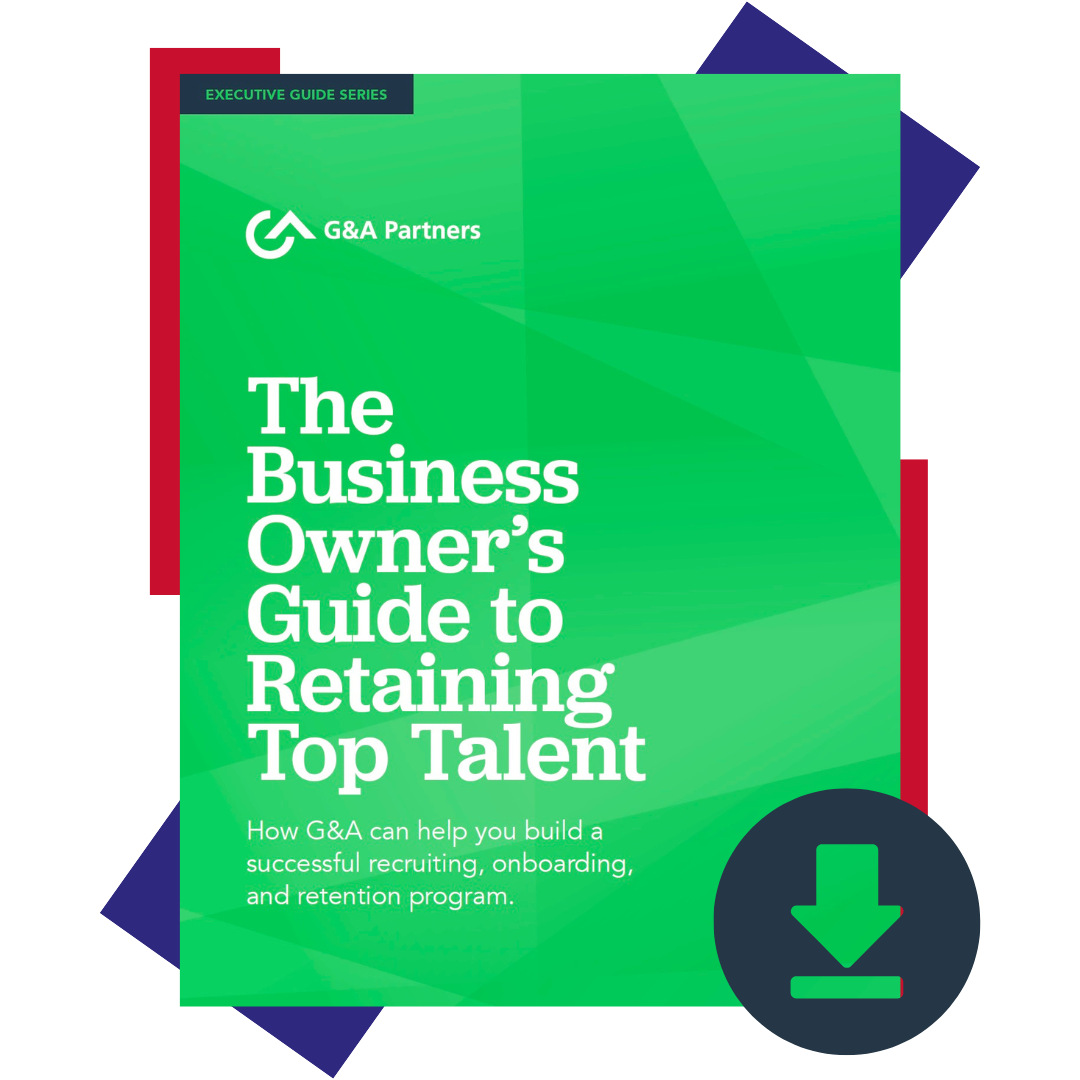As a business owner, you understand that building and retaining a great team is key to the long-term growth and success of your company. Competing against larger organizations for experienced and inspired employees, however, can be a real challenge. But it is possible.
You can start by reassessing your current compensation package. Offering a competitive salary is certainly a great way to keep you in the running for top candidates, but it isn’t the only way—and in some cases, it’s simply not possible. That’s why more and more small businesses are choosing to rebuild and reframe their benefits plan as total rewards compensation.
This approach allows you to go beyond just salary to compete for talent. By building enticing compensation packages into your business strategy—packages that creatively combine the total value of base pay, benefits, rewards, and other perks—you can distinguish yourself as an “employer of choice.”

What does total rewards compensation mean?
The elements that make up a total rewards package combine traditional and non-traditional offerings.
Some traditional offerings include:
- Base pay (either a salary or hourly wage rate)
- Access to healthcare / health insurance
- Dental and vision benefits
- Retirement plans and/or contributions
- Life insurance
- Paid time off (PTO)
- Stock options (if applicable)
Non-traditional compensation package offerings include (but are not limited to):
- Variable pay incentives (performance bonuses, profit sharing, etc.)
- Company-sponsored training / Career development opportunities
- Employee wellness / health and well-being programs
- Workplace flexibility options / Work-life balance
- Identity theft protection plans
- Employee discount programs
- Employee assistance programs (short-term counseling, retirement planning, etc.)
Each individual offering is important—but grouped together—and presented as a total rewards package (or even customized to the specific job candidate) can put you in the running for a pool of talent that may have previously been out of reach.
Benefits of a Total Rewards Approach
Whether you build a total rewards package on your own, or with the help of an experienced HR outsourcing provider, like G&A, you will see the benefits of this new approach in a variety of ways, including:
Improved Recruitment Capabilities
Once you have quantified the value of your total rewards package, you can utilize it to demonstrate the value of your organization’s benefits package while talking with potential candidates.
Increased Awareness of Total Benefits Provided
Underutilization of employee benefits is a concern for many companies. The time, effort, and resources that go into putting together an employee benefits packages (particularly for a small business) can be considerable, and when those benefits go unused, it can feel like a waste of time and money. The reason employees may not take advantage of certain benefits, however, is because they simply didn’t know they existed. A total rewards compensation program can help you better communicate all of the benefits and perks that are available to current and future employees.
Higher Employee Retention Rates
It’s human nature to value things based on our own personal cost. The same is true of employee benefits and other rewards. A total rewards compensation package allows you to quantify the value of each individual benefit or perk, as well as the total amount you spend on the rewards.
When an employee can see just how much you’re willing to invest in them, above and beyond their paycheck, the results can be very positive, leading to a better work environment, including improved morale, employee engagement, and ultimately, employee retention. Engaged employees are more loyal employees, which means that it’s going to take more than a small salary increase to lure them away.
Improved Performance and Productivity
A more engaged workforce isn’t just a loyal workforce, it’s also a more productive one, and total rewards programs have been linked to increases in overall employee performance and satisfaction.

Implementing a Total Rewards Program
Although total rewards compensation packages have grown in popularity, you’d be hard-pressed to find two that are identical. The greater degree of flexibility and variety that these programs offer is a huge part of their appeal, meaning you can customize your rewards packages to fit whatever is most attractive or important to the specific workforce you are targeting.
The virtually endless possibilities can also make implementing a total rewards program seem a bit daunting. As with most employee initiatives, the devil is in the details, and how you choose to build, communicate, and evaluate the success of your total rewards compensation strategy will contribute to how successful the program will be.
1. Building the Program
Building and implementing a new total rewards compensation program doesn’t mean you have to throw out the rewards or benefits you’re currently offering. Instead, start by evaluating your current benefits and perks to identify any gaps or areas of opportunity. This is also a good opportunity to communicate with your employees—ask them what rewards they would value the most, either through informal conversations or by conducting a quick survey.
When building or evaluating your total rewards compensation package, make sure to include elements from the following categories:
- Compensation
- Benefits
- Development
- Work environment
By incorporating rewards from each of these categories, you’re ensuring your program includes elements that appeal to your entire workforce, regardless of generational, seniority, or position-level differences.
During the initial design phase, it’s also important to set specific business goals for the program. These goals will vary depending on your motivations for implementing a total rewards strategy, but will generally include increasing participation rates, improving job satisfaction and employee engagement, reducing turnover, and more.
Don't want to go through the hassle of putting together a total compensation statement every year? HR outsourcing providers like G&A Partners can help you build, implement, evolve, and communicate total compensation benefits to your current, and future employees. Contact us to get started.
2. Communicating the Program to Employees
After identifying what will be included in your new total rewards package/program, the next step is to get the word out to employees. Why? Because the more your employees are aware of and understand the program, the more likely they are to take advantage of the full offerings and understand the value it provides.
As you launch, implement, and add to your new program, clear and effective communication should also be a top priority. In fact, it’s a good idea to announce the program in person, either during a regular staff meeting or in a special training session—and highlight the different available rewards throughout the year to keep the program fresh and top of mind for your employees.
Another effective way to communicate the value of a total rewards program is to create and distribute personalized total compensation statements. Usually designed to look like a bank statement or paycheck stub, total compensation statements show the monetary cost of each of the benefits you are providing to employees throughout the course of the year, alongside the employee’s annual compensation.
3. Evaluating the Success of Your Program
This last stage of the implementation process is both the most important and often, the most overlooked. One reason might be that conducting a thorough evaluation can seem like an overwhelming task, especially if you and your team aren’t sure how well the program is being received by employees. By simply measuring the outcomes and results against the goals you set during the building phase, you can take the time and difficulty out of the process.
In fact, the specific goals you set will determine which instruments or tools you can use to measure those results. For instance, if one of your goals is to increase job satisfaction, you might conduct a job satisfaction survey prior to implementing the program and again at the end of the year to compare the responses.

Final Thoughts: Total Rewards Compensation Packages
Implementing a total rewards compensation program isn’t an overnight endeavor—it takes careful planning and preparation. Once you successfully make the switch to a total rewards strategy, however, the return on investment will ensure you will never look back.
Like a lot of companies, you may want to implement your own total rewards programs, but feel you don't have the time to research additional benefit offerings, the resources to offer more benefits, or maybe you just don’t know where to start.
As part of G&A Partners comprehensive outsourced HR, benefits, and payroll solutions, our dedicated HR and benefits specialists can help you design an attractive employee benefits offering (often at rates much lower than you could find on your own), and we can provide you with the expertise to draft and implement employee policies and procedures that increase engagement and employee satisfaction.
Downloadable Guide
The Business Owner's Guide to Retaining Top Talent
Download our ultimate employee retention guide, which includes information on how to:
- Find and hire the right candidates
- Engage employees from day one with dynamic onboarding
- Build a competitive compensation and benefits package
- Develop, implement, and utilize employee surveys
- Meet your employees’ professional growth needs
- Strengthen your culture and diversity efforts

